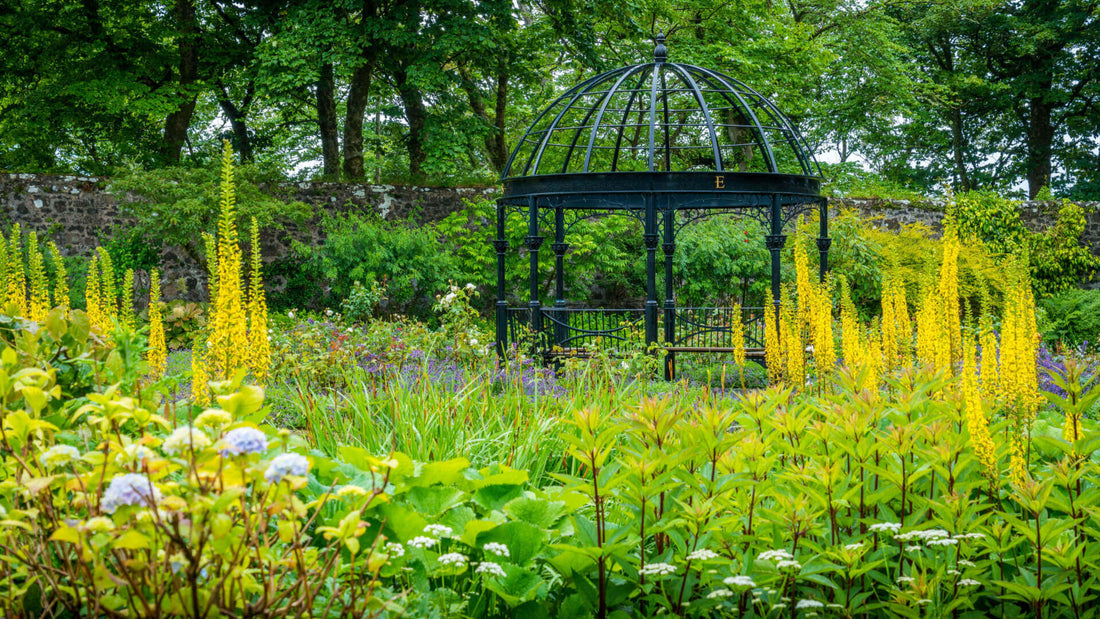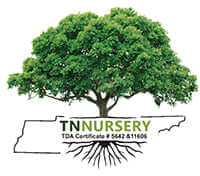
How To Make A Proper Scottish Garden
Share
Creating a Proper Scottish Garden
Scotland understood for its breathtaking landscapes and rich artistic heritage, has a longstanding tradition of gardening that is highly affiliated with its natural surroundings. A proper Scottish garden embodies the essence of this picturesque land, blending elements of wild beauty with careful cultivation. To create your own Scottish garden, one must pay homage to the country's rugged terrain, lush greenery, and diverse flora. In this article, we will examine the elemental principles and techniques for crafting a proper Scottish garden that captures the essence of this beautiful region.
Embrace the Landscape
The first step in creating an authentic Scottish garden is to embrace the natural landscape. Scotland's geography varies from rugged mountains to rolling hills, lochs, and coastlines. Please work with the land's contours and features rather than against them. Incorporate stone walls, pathways, and bridges that complement the terrain, creating a seamless transition from your garden to the surrounding environment.
Native Plants
A quintessential feature of Scottish gardens is the use of native plants. Choose flora that thrives in the Scottish climate, including heathers, thistles, bluebells, and ferns. Native plants require less maintenance and contribute to the garden's authenticity and ecological balance. They supply important habitat and food sources for local Wildlife, enhancing the overall biodiversity of your park.
Incorporate Water Features
Scotland is renowned for its abundant water bodies, from meandering streams to pristine lochs. Integrate water features like ponds, streams, and waterfalls into your garden design. These elements not only enhance the space's natural beauty but also create a sense of tranquility and provide a habitat for aquatic life and birds.
Stone and Rockery
Stone is a fundamental element in Scottish gardens, representing the country's rugged terrain. Incorporate stone walls, rockeries, and paving to add texture and structure to your garden. Utilize local stone if possible, as it blends seamlessly with the surroundings and evokes a sense of authenticity.
Encourage Wildlife
Scottish gardens often teem with Wildlife, from squirrels and hedgehogs to birds and insects. To create a proper Scottish garden: Make it a welcoming haven for these creatures. Install bird feeders, nesting boxes, and insect-friendly plants. Evade employing chemical pesticides and herbicides, as they can harm the local Wildlife and disrupt the ecosystem. Scottish Wildflower Meadows
Mimic Scotland's picturesque meadows by creating wildflower areas within your garden. These meadows burst with color during the spring and summer, attracting bees, butterflies, and other pollinators. Wildflower meadows enhance the aesthetic appeal and contribute to the conservation of native plant species.
Timber and Woodland Features
Woodland areas are an integral part of Scotland's landscape. Integrate timber and wooden features, such as benches, fences, and arbors, into your garden design. Plant native trees like Scots pine, birch, and oak to create shaded areas and enhance the overall ambiance.
Use Natural Materials
In keeping with the Scottish garden theme, opt for natural and locally sourced materials for hardscapes like pathways and walls. Slate, granite, and pebbles can be used creatively to add character to your garden while remaining true to the Scottish aesthetic.
Garden Art and Sculptures
Scottish gardens often feature art and sculptures that blend harmoniously with the natural surroundings. Consider adding stone sculptures, ornate gates, or wrought ironwork that pays homage to Scotland's rich artistic heritage. These factors can serve as focal topics and add a hint of grace to your garden.
Seasonal Variety
A proper Scottish garden transforms throughout the seasons. Embrace the changing landscape by planting a variety of seasonal flowers and shrubs. Spring bulbs, summer perennials, and autumn foliage ensure your garden remains vibrant and captivating year-round.
Sustainable Practices
Sustainability is a core principle of Scottish gardening. Implement eco-friendly practices such as composting, rainwater harvesting, and mulching to reduce your garden's environmental impact. By responsibly nurturing the land, you contribute to your garden's long-term health and resilience.
Garden Paths and Walkways
Design pathways and walkways that meander through your garden, inviting exploration and discovery. Use gravel, stepping stones, or wooden boards to create winding paths that guide visitors through the landscape. These paths should connect critical features, such as seating areas or focal points, while allowing for unhurried strolls amidst nature.
Garden Seating
Provide comfortable seating areas strategically placed to take in the scenic views of your Scottish garden. Whether it's a stone bench overlooking a pond or a wooden table nestled in a shaded nook, well-placed seating enhances the overall experience of your garden, letting you and your guests relax and appreciate the beauty around you.
Lighting Design
Extend the pleasure of your garden into the night with thoughtfully designed outdoor lighting. Use soft, warm lighting to illuminate pathways, water features, and critical elements, creating an enchanting atmosphere perfect for nighttime gatherings or quiet contemplation.
Garden Maintenance
A proper Scottish garden requires regular maintenance to keep it looking its best. Prune shrubs, trim hedges, and weed flowerbeds as needed. Stay attuned to the changing seasons and adjust your garden care routine accordingly. Proper maintenance ensures that your garden continues to thrive year after year.
Scottish Seasonal Celebrations
In Scotland, gardens are often used for gatherings and celebrations that mark the changing seasons. Incorporate this tradition into your garden by hosting seasonal events. Whether it's a summer solstice bonfire, a harvest festival, or a winter garden tea party, these celebrations can help you connect with nature and your community while enjoying the fruits of your garden.
Weather-Resilient Structures
Scotland's unpredictable weather can be challenging, so consider adding weather-resilient structures to your garden. A well-placed pergola or gazebo can provide shelter from rain and wind, letting you enjoy your outdoor space even during less-than-ideal weather conditions. These structures also allow climbing plants to flourish, adding another coating of beauty to your garden.
Garden Borders and Edging
Define your garden's boundaries with carefully chosen borders and edging. Traditional Scottish gardens often feature dry-stone walls, hedgerows, or rustic wooden fencing. These elements provide structure and contribute to the garden's sense of place and enclosure, creating a cozy and intimate atmosphere.
Blend Formal and Informal Design
Scottish gardens often strike a balance between formal and informal design elements. While embracing the wild and natural aspects of the landscape, consider adding standard touches like neatly clipped hedges or geometrically designed parterres. This fusion of styles creates a garden that is both relaxed and refined.
Scottish Personal Touch
Lastly, infuse your garden with your personal touch and creativity. Whether adding unique garden ornaments, crafting hand-made seating, or incorporating elements inspired by your heritage, your garden should reflect your personality and passions. Your garden is a canvas for self-expression; you can make it yours by infusing it with your individuality. In conclusion, creating a proper Scottish garden is a journey that blends reverence for Scotland's natural beauty with your vision and passion. By embracing the landscape, using native plants, and integrating water features and wildlife-friendly elements, you can make a garden that seizes the spirit of Scotland's picturesque landscapes. Incorporate weather-resilient structures, seasonal celebrations, and personal touches to make your garden a place of year-round beauty and inspiration. A proper Scottish garden is not just a piece of land but a living work of art, for example with all types of ferns and greenery that connects you to the rich tapestry of Scotland's history, culture, and natural wonders.
